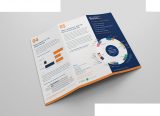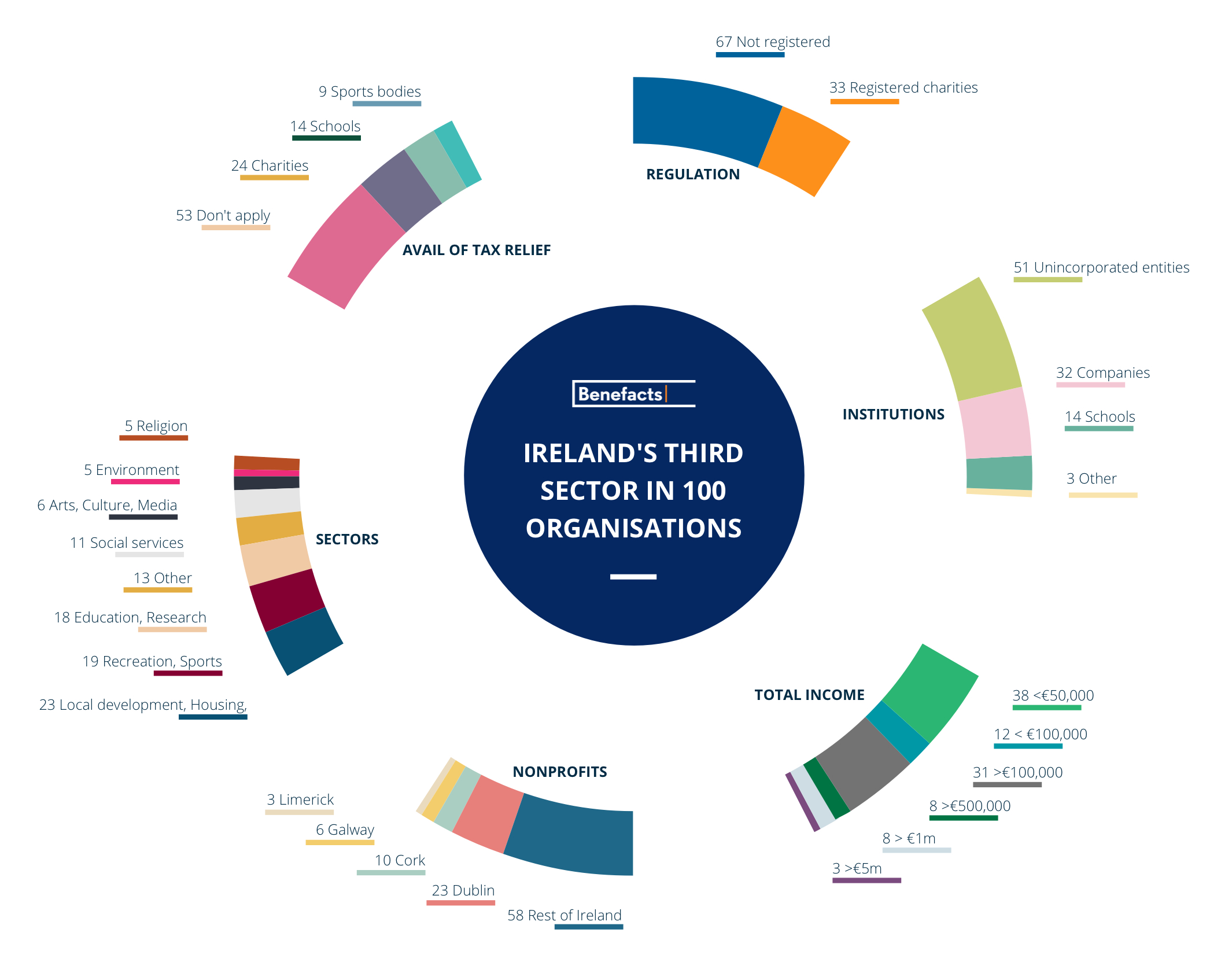Blog
Benefacts Latest Third Sector Analysis

Today we released our third annual analysis of the Third Sector in Ireland, based on all of the data available from the public filings of nearly 30,000 nonprofits, as at the end of Q1 2019

SOME KEY FINDINGS
• Fewer than 300 nonprofits have a turnover greater than €5m, with more than 3,000 reporting a turnover of €50,000 or less.
• State funding is not evenly distributed. €4.2bn, or more than 70% of public money committed to the Third Sector is directed at only 60 major charities for which data is available – 22 higher education bodies, and 38 health or social care services, on behalf of the State.
• Most of the remaining €1.7bn goes to c.1,500 nonprofits – about half of which are registered charities – that derive more than 50% of their funding from the State. About half of these smaller nonprofits were established between 2000 and 2010, often as special purpose vehicles to provide job creation, local development, social supports and other arms’ length services on behalf of the State. The rest were set up independently of Government to provide services mostly in health and social services, local development, housing and advocacy.
• The average size of a nonprofit board is 6 directors/charity trustees – mostly older men. Nearly a quarter have served on the same board for nine years or more. These trends are most pronounced in the boards of sports bodies (where the male:female balance is 80:20, and one-third of directors/trustees have served for more than nine years), and in social enterprise and social housing.
• The Report debunks the impression that nonprofit employees are highly paid. Outside of the higher education and “Section 38” where staff are remunerated as though they were public servants, Third Sector pay norms fall well below the average in the rest of the economy, with fewer than 1% of jobs attracting higher pay (more than €70,000 per annum).
• More than 80,000 people served as directors and/or trustees in Irish nonprofits during 2018. This figure does not include the many thousands of people who serve on the Boards of Management committees of clubs and societies.
WELCOME FOR BENEFACTS ANALYSIS
Speaking at the launch, Mr Sean Canney TD, Minister of State with responsibility for Natural Resources, Community Affairs and Digital Development, said
“I would like to acknowledge the very important work undertaken by Benefacts, as reflected in this third annual analysis of Ireland’s not for profit sector. The inclusion of data from the Public Participation Networks is particularly welcome, given the on-going growth in PPN membership supported by my Department and the local authorities.”
TRENDS IN THIRD SECTOR DATA AND DISCLOSURES
Ireland’s Third sector presents a complicated mosaic of organisations and groups, which contribute to the wealth and health of our society, environment and culture. Thanks to Open Data policies driving more and better digital disclosure of public information, Benefacts is able to extract a rich dataset from the regulatory filings of about two-fifths of the entities in its database.
• This year, we were able to add nearly 10,000 nonprofits not already in the database, because they are published on the registers of 29 local Public Participation Networks (PPNs), with support from local authorities and the Department of Rural and Community Development. This number will grow as data from the four remaining PPNs are added, and as more local entities sign up.
• We have also started to report on the numbers of nonprofits gaining, or losing, charitable status from Revenue – where there has been a small contraction overall – and from the Charities Regulator – where the majority of newly-registered charities in 2018 were schools.
• 562 nonprofit companies now elect to file their financial statements using Charities SORP – an increase of 4% over the previous year – and 593 nonprofits comply with the Governance Code for Community and Voluntary Organisations, an increase of 19% over the previous year.
Despite these positive indicators, Benefacts is limited in its capacity to provide year-on-year, sector-wide trend data, because the biggest data source of all – the financial statements of thousands of nonprofits including charities – are subject to a double standard.
ACCOUNTABILITY WITHOUT TRANSPARENCY
The rules operated by Government funding departments and agencies require nonprofits receiving State aid to provide their funders with the same version of accounts that they prepare for themselves – detailed statements including the auditor’s report, a directors’ narrative report, balance sheet, income and expenditure statement and notes setting out things like related party transactions, policies on reserves, staff remuneration and so forth.
The 2014 amendment to company law allows nonprofit companies (including charities) to send these to the Companies Registration Office in an abridged form; new financial reporting regulations introduced in 2017 allow smaller companies (which is the majority of nonprofits including charities) to provide even less information, with no notes or narrative at all.
A feature of charity law is that charities that are also companies file their accounts only to the Companies Office, and a delay in promised regulations to specify the form in which charity non-companies are to prepare their financial statements means that the public still has no access to the accounts of unincorporated charities – mostly religious dioceses and congregations, trusts and foundations.
This is accountability without transparency, and it amounts to a lack of joined-up thinking on the part of State funders and regulators. This year these trends – 45% of nonprofit companies filing abridged accounts, 5% of nonprofits (including charities) filing as micro-entities, no financial statements for 4,000 unincorporated charities – deprived us of the capacity to analyse about €1.7bn of sector turnover.
Category: Nonprofit sector



